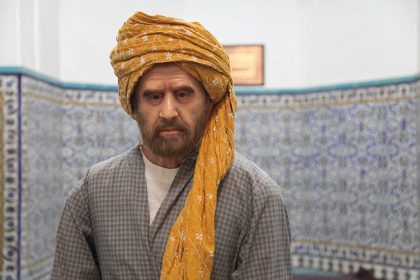Bosphorus Strait! The intersection between the two parts of Europe and Asia fascinated the great empires of the past centuries ago, and today it is a meeting place for artists and tasteful tourists in Istanbul. Apart from the sea traffic, this narrow and winding waterway of Northwest Turkey winds through the heart of Istanbul and divides the city into two continents, Europe and Asia. The Bosphorus is the only natural strait that connects two continents and separates the Sea of Marmara and the Dardanelles Strait. The stunning beauty and strategic location of this waterway made it the focal point of empires, trade and culture throughout history. Today, the shores of the Bosphorus combined with magnificent palaces, ancient fortresses and fishing villages have created a unique attraction in the city of Istanbul. Here we get to know the history, geographical location and finally the sights of this beautiful waterway.
The historical significance of the Bosphorus Strait
The history of the Bosphorus Strait is intrinsically linked with the city of Istanbul. Known in ancient times as Constantinople, the city was located at the crossroads of Europe and Asia, making it a favorite destination for the Romans, Byzantines and Ottomans. This strait played an important role in these empires and acted as a natural barrier against enemy attack and the gate of the Black Sea and a symbol of power.
The first recorded name of the Bosphorus dates back to the ancient Greeks in the 7th century BC. They established colonies on the coast of Europe. Hence, the name of this strait is taken from the Greek myth of Io, who was turned into a cow by Zeus and forced to swim in the waters. This water is the famous Bosphorus today.
During the Ottoman rule, the Bosphorus Strait became a vital transportation and trade center, connecting the Black Sea to the Mediterranean Sea. In addition, Ottoman palaces, mansions, and other fortifications were all built around the gorge. This strait attracted the attention of merchants from all over the world who came to Istanbul to trade spices, silk and other luxury goods.
Today, the Bosphorus still maintains its importance and strategic location, but it is also known as one of the most stylish, beautiful and popular tourist attractions in Istanbul.
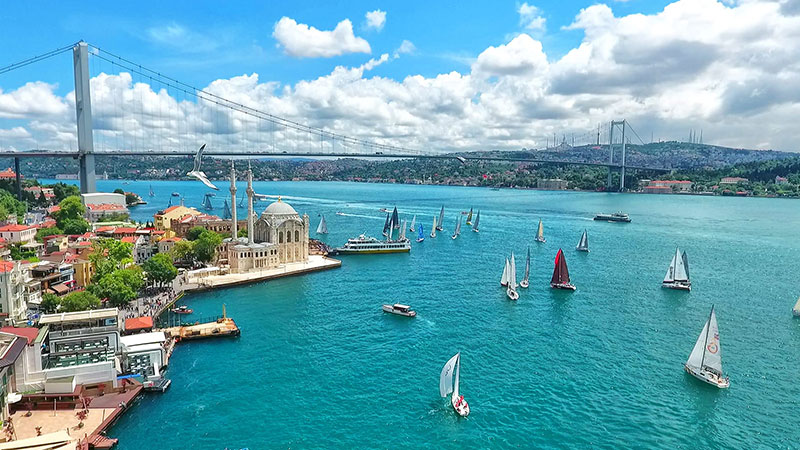
Where is the Bosphorus Strait? Geographical location
The Bosphorus Strait has a unique combination of natural beauty and geological features. The strait is 32 km (20 mi) long between the Sea of Marmara and the Black Sea and varies from a minimum width of 700 meters (2,300 ft) to a maximum width of 3.5 km (2.2 mi).
The Bosphorus was created millions of years ago by the displacement of the earth’s plates, this narrow passage between two continents. This geological event also resulted in the rapid flow of the strait current in the opposite direction at different depths, making navigation challenging for commercial and naval vessels. These currents are mostly influenced by the unique hydrological conditions of the Black Sea and the Sea of Marmara.
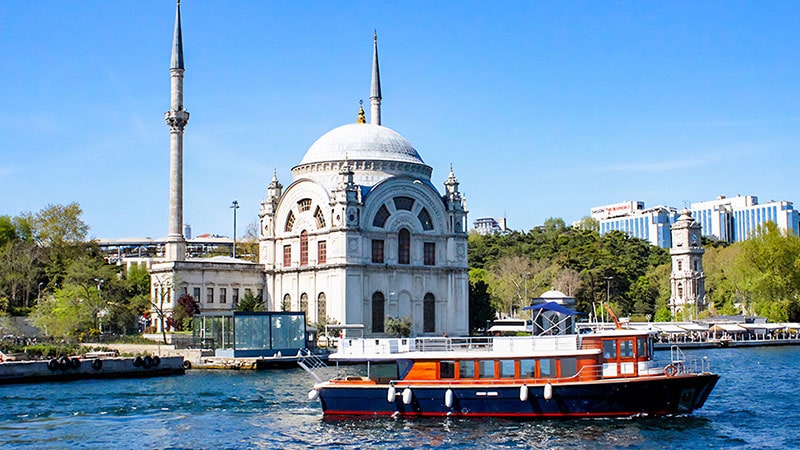
Important historical events of the Bosphorus Strait
- 7th century BC: Thracian tribes lived around the Bosphorus, who established small settlements along the coast.
- 4th century BC: The Greek city of Byzantium is founded.
- 330 AD: The Roman emperor Constantine I founded the city of Constantinople (modern day Istanbul) on the site of Byzantium and formed the new capital of the Roman Empire.
- 5th century: The Byzantine Empire built several fortresses along the Bosphorus to defend against attacks from the north.
- 1453: The Ottoman Empire conquered Constantinople and established Istanbul as the new capital.
- 1853-1856: The Crimean War began and several important battles took place in and around the Bosphorus Strait.
- 1914-1918: World War I began and the Bosphorus became vital for the Ottoman Empire. After their defeat, the Bosphorus was filled with foreign warships of European powers.
- 1923: The modern Republic of Türkiye was established. But the International Commission took control of the Bosphorus after the Turkish War of Independence because this strait was an international shipping route. Finally, in 1936, the control of this strait was returned to Türkiye.
- 1950s to 1970s: The Bosphorus became increasingly crowded with ship traffic, leading to concerns about environmental pollution.
- 2013 to 2016: Construction of the Eurasia Tunnel, the first undersea tunnel, began and three years later the tunnel was opened to the public.
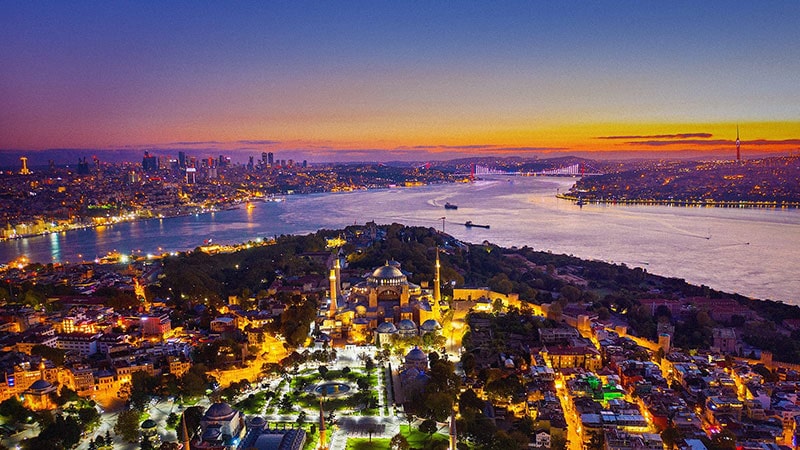
Bosphorus attractions
Undoubtedly, Istanbul owes more than half of its beauty to the Bosphorus. The strait that separates the two parts of Asia and Europe and in each of its parts there are many buildings to see and interesting things to do. In the following, we will learn about the attractions of the Bosphorus Strait:
Bosphorus bridges
- Fatih Sultan Mehmet Bridge, which was built in 1988, is named after the Ottoman Sultan Mehmed II, who conquered Constantinople (Istanbul) in 1453.
- The 1510-meter Bosphorus Bridge, which is also called the 15th of July Martyrs Bridge, was built in 1973 and is the first bridge that was placed on the Bosphorus Strait.
- Yavuz Sultan Salim Bridge is a cable-stayed bridge that was completed in 2016 and is named after Sultan Selim I of the Ottoman Empire who ruled from 1512 to 1520. The height of the two pillars of the bridge is 322 meters (1056 feet), which makes them the tallest towers of the bridge.
In addition to the Bosphorus and its beautiful nature, Bebek neighborhood is one of the other luxury areas of Istanbul that you can visit during your trip to this city.
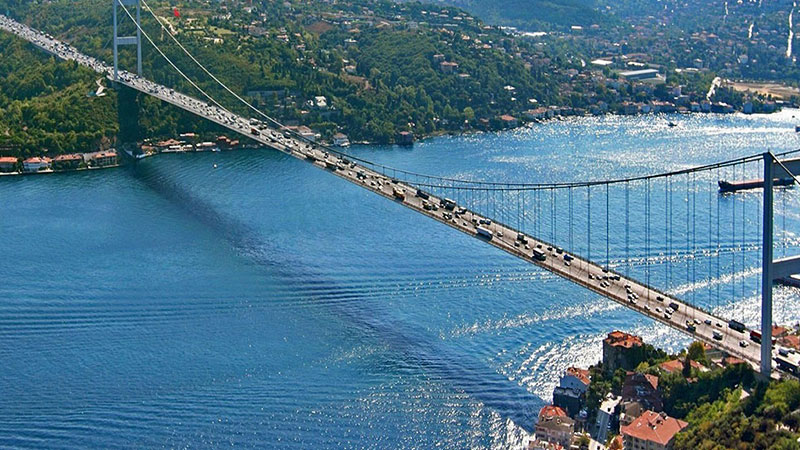
The famous Eurasia Tunnel
The 5.4 km Eurasia Tunnel between the European and Asian coasts of Istanbul under the Bosphorus consists of two separate tubes for traffic and accommodates 100,000 vehicles per day. The tunnel was opened to the public in December 2016 and is the first undersea tunnel to connect two continents.
The construction of the Eurasia Tunnel, which will reduce traffic and motor vehicle congestion on Istanbul’s bridges, still requires digging more tunnels under the seabed, as well as access roads and other infrastructure. The project was funded through a public-private partnership with the Turkish government and a private consortium. The construction of the first tunnel was so successful that another tunnel may be built on top of it. In the Istanbul tour, you can visit the famous Eurasia Tunnel.
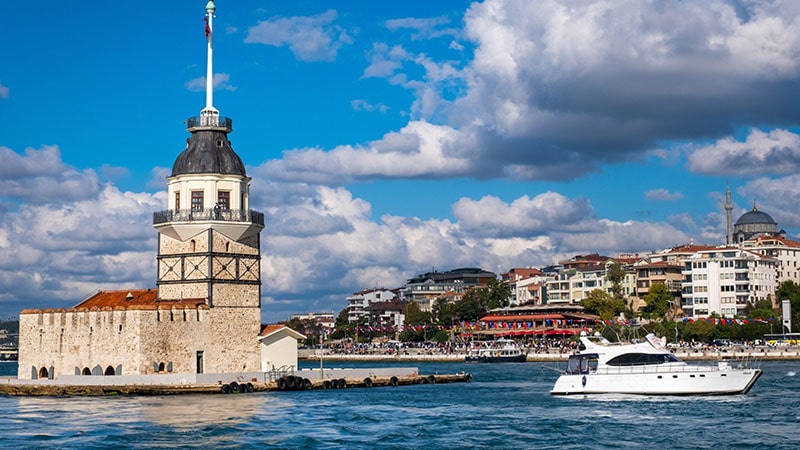
The northern entrance of the gorge
The northern entrance is where the strait meets the Black Sea. The entrance is marked by the Anadolu Feneri Lighthouse, one of the oldest lighthouses in the world, which guided ships through the strait for centuries. Another notable sightseeing spot is the 15th century walled Rumli Castle, which was built by the Ottoman Sultan Muhammad II.
The southern entrance of the gorge
The southern entrance is near the Marmara Sea coast, where the strait narrows significantly before entering the Marmara Sea. This entrance is marked by the Maiden’s Tower (Kiz Kulesi) near the beach. The Athenian general Alcibiades built the Maiden Tower in the 5th century BC. Over the centuries, this tower has had various functions, but these days it has become a symbolic tourist attraction. Also, several other important places are located in this place, including Selimiye Barracks and Haydar Pasha Port.

The best time to visit the Bosphorus
Each season of the Bosphorus offers unique attractions, so the best time to visit depends on your preferences and the activities you want to enjoy.
- Bosphorus springs are delightful, the shores of the strait come alive with colorful blossoms and lush greens. Temperate weather has an average temperature between 10°C (50°F) and 20°C (68°F).
- Summer is the peak season of tourism in Istanbul. We suggest that you experience Istanbul’s single activities along with sightseeing in the Bosphorus. Average summer temperatures in the Bosphorus range from 20°C (68°F) to 30°C (86°F), making it ideal for swimming, sunbathing, and water activities such as kayaking and sailing.
- Autumn presents an attractive color image of the Bosphorus by changing the leaves from green to gold. The weather during this season is mild and the average temperature is 15°C (59°F) to 25°C (77°F).
- Winter brings magical spaces and the waters of the gorge take on a great atmosphere under the clear sky. Winters in Istanbul are cold and snowy but beautiful.
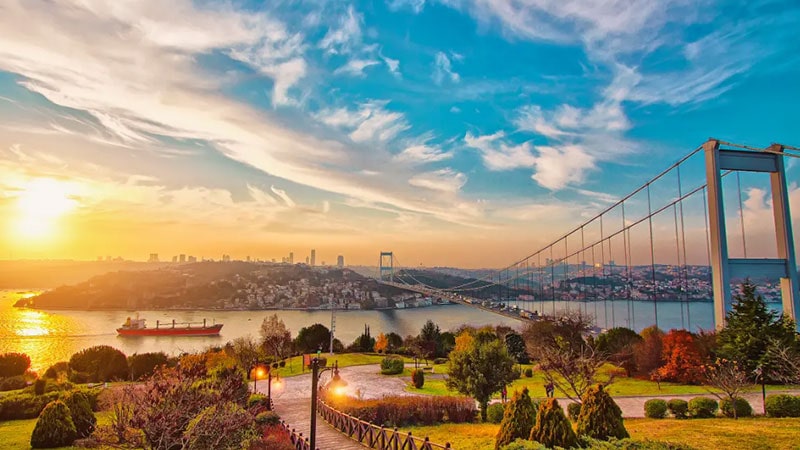
Visiting both the European and Asian sides of the Bosphorus
In this paragraph, we introduce the attractions of the Asian and European parts of the Bosphorus:
European side
The European part is the western side of the strait. The European part houses many of Istanbul’s most important neighborhoods and places, including Bohemian Karakoy. Besiktas district, at the northern end, has Yildiz Palace. While Ortakoy is famous for its waterside mosque.
Asian side
It covers the eastern side and houses many neighborhoods including the Uskudar ferry port, trendy Kadikoy, Beylerbey with the palace of the same name, and Cegelkoy. During your trip to Istanbul, you can include a visit to the Sultan Ahmed Mosque or the Blue Mosque in your plans.
Dolma Baghche Palace
The 19th century Dolma Baghche Palace, located on the coast of the European part, fully reflects the Ottoman architecture and is a proof of the wealth and power of this empire.
Rumli Castle
Rommel Castle, which overlooks the narrowest point of the Bosphorus Strait, played an important role in the conquest of Constantinople and the Ottoman Empire.
Ortakoy Mosque
On the coast of Europe, the 19th-century Ortakoy Mosque is famous for its delicate carvings, soaring minarets, and beautiful seaside location.
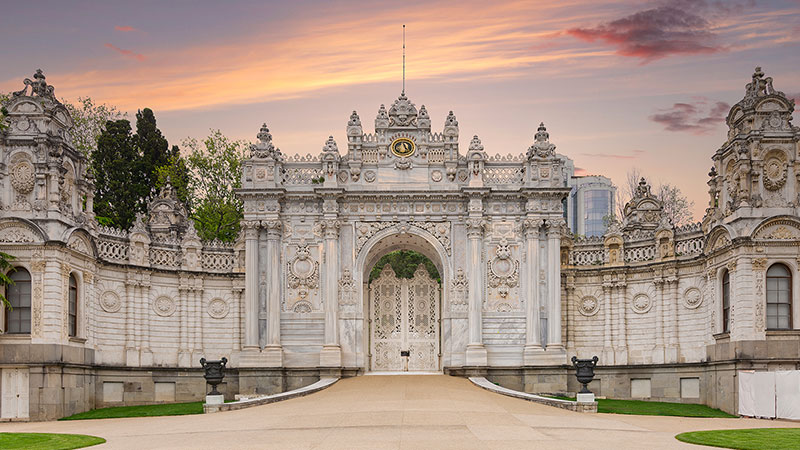
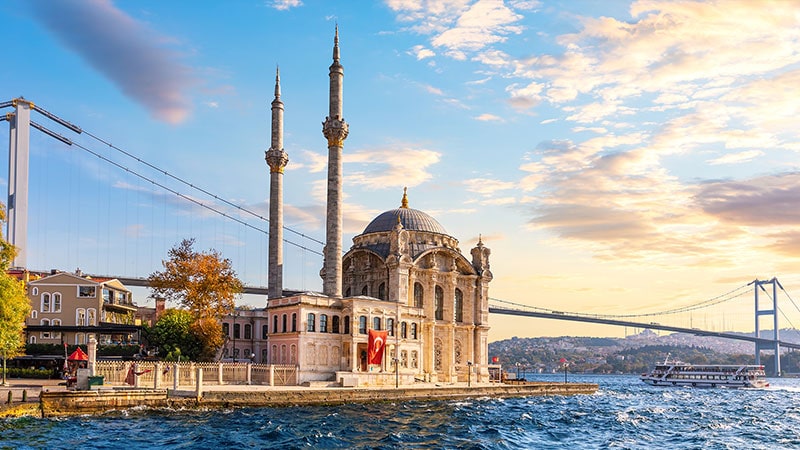
Bosphorus boat tours
Public ferries are an affordable and convenient way to explore the Bosphorus. For example, some boats offer 1.5-hour tours that include passing by iconic landmarks such as Dolma Baghche Palace and Rumeli Castle. Ferries also offer services to get off at different stations and see attractions at your own pace. If you are interested in water sports, we offer you the best water parks in Istanbul.
For a better Bosphorus cruise experience, you can book private boat tours that offer more flexibility to customize itineraries. The Bosphorus cruise program usually includes dinner on board with live music and allows you to experience the romantic atmosphere and create unforgettable memories.
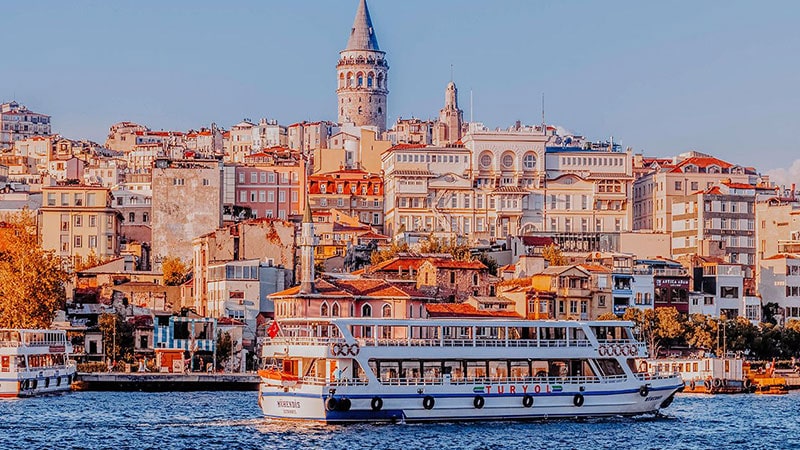
Restaurant tour in the Bosphorus
It is safe to say that the Bosphorus strait has shaped the cultural identity of Istanbul and has influenced art, literature and music. In addition, the Bosphorus is also a paradise for food lovers, reflecting Istanbul’s rich cultural heritage. The local fishing grounds are renowned for their fresh and delicious seafood, and the waters of the strait provide plenty of catches for local fishermen. Popular seafood dishes in the Bosphorus include grilled octopus, fried calamari, and stuffed oysters.
On the European side, Arnavutkoy is a great place to try different tastes in Istanbul, with street cafes and lively restaurants offering a wide range of cuisine. In addition, you can experience the authentic taste of Turkish coffee in the chic cafes of Bebek neighborhood. If you are a restaurant goer, don’t miss reading the article about the best local and international restaurants in Istanbul.

final word; More attractions in the Bosphorus
In addition to the mansions, castles and big palaces on the shores of the Bosphorus. Do not neglect the small villages of this area. In these villages, you can experience the real culture of Istanbul from food, mosques and street cafes. The last point is that our experts at Setare Vanak Airline Agency provide specialized hotel and ticket booking services in Istanbul.
Frequently asked questions
What is the reason for the fame of Bosphorus Strait in Istanbul?
This strait is centuries old and during its life it has always been one of the important strategic points for empires. Today, the Bosphorus has become one of the most popular tourist attractions in Istanbul due to its natural beauty and the presence of palaces and historical buildings.
Is the Bosphorus in Istanbul a sea or a river?
The Bosphorus is a strait that separates the European part of Turkey from its Asian part and connects the Sea of Marmara to the Black Sea.
What attractions are around the Bosphorus?
Mansions, palaces, cozy restaurants and cafes are among the tourist attractions around the Bosphorus.
Copying of the contents of Setare Vanak Airline Agency is prohibited only by mentioning the source.
RCO NEWS
















